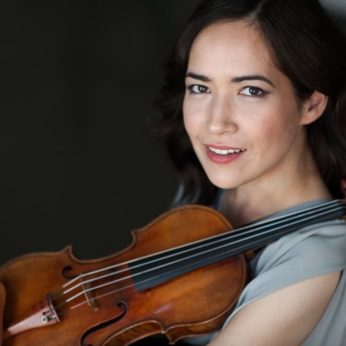Composer: Johannes Brahms (b. 1833 - d. 1897)
Performance date: 01/07/2023
Venue: St. Brendan’s Church
Composition Year: 1886
Duration: 00:19:52
Recording Engineer: Tom Norton, RTÉ
Instrumentation: vn, pf
Instrumentation Category:Duo
Artists:
Viviane Hagner -
[violin]
Lilit Grigoryan -
[Piano]

Sonata for piano and violin No.2 in A major Op.100 [1886]
1. Allegro amabile
2. Andante tranquillo – Vivace
3. Allegretto grazioso (quasi andante)
In early summer 1886, Brahms took his holiday at Hofstetten on the shores of Lake Thun, near his friend Josef Widmann. Among the many visitors that summer was a beautiful contralto, Hermine Spies, his songstress of the moment whom he teasingly called Hermione-ohne-O. For her that summer he wrote some of his loveliest songs – Wie Melodien zieht es mir and the heart-breaking Immer leiser wird mein Schlummer, which closes with the cry komm, o komme bald! And wisps of these songs appear fleetingly in this Sonata that he wrote while waiting for her visit.
The Sonata exhibits all the grandeur of the composer at his romantic best. Indeed, some would regard it as one of his most songlike works, with a friend of the composer calling the whole Sonata one caress. It has gained a number of nicknames: best known is The Prize Song, because the first three notes of the opening melody are the same as the Prize Song in Wagner’s Die Meistersinger.
The piano opens with the Prize Song motto, the violin at first just adding lazy comments but gradually becoming more involved and then providing a complete version. The second subject is where we hear echoes of Immer leise. The hallmark of the movement is its amabile marking. This music breathes contentment and charm. There are clever features, such as the use of five-bar phrasing, with an instrument adding a sixth bar to the other’s original five like an echo, and the impressive coda, which drew a comparison with cloud-capped towers from the great musicologist, Sir Donald Tovey.
The second movement is unusual but not unknown in Brahms – alternating a to-die-for slow melody with bursts of material more suited to a jaunty Scherzo. This faster section appears twice, using similar notes in each case but delivered at a far more rapid pace the second time around driven forward by the violin’s electrifying pizzicati. The finale is a thoughtful rondo, returning to the amabile mood of the opening movement. The rondo theme is darkly coloured with graceful, arching phrases. The episodes between the return of the rondo theme are in a similar vein and the usual lively contrast, typical of a rondo finale, are not to be heard in this ruminative and warmly melodic movement. There is a weighty A minor theme in the central episode and Brahms must have been specially fond of it, as he reprises it in the contented coda that concludes this delectable Sonata.
Ian Fox
Copyright © 2025 West Cork Music. All rights reserved.
Designed and developed by Matrix Internet